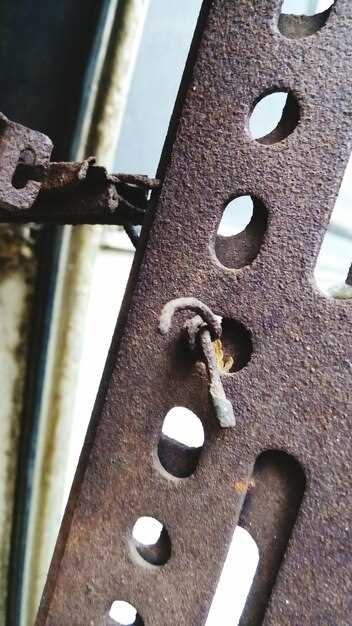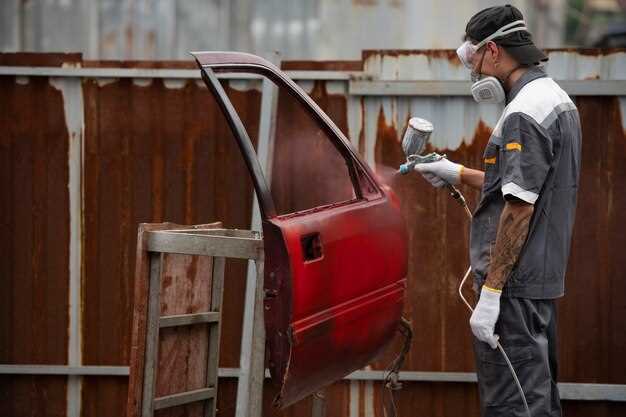
Rust damage can significantly compromise the integrity of any metal panel, leading to costly repairs and safety hazards. Understanding the proper techniques for rust repair is essential for anyone looking to restore their vehicle or equipment. Whether you are dealing with small surface rust or extensive corrosion, addressing the issue promptly can prevent further deterioration and maintain the value of your asset.
Effective rust repair begins with thorough inspection of the affected area. Identifying the extent of the rust and determining the underlying causes can help you choose the right approach for restoration. It’s crucial to remove all rust from the panel, as any remnants can lead to recurring issues. Various methods, such as sanding, grinding, or using rust removal chemicals, can be employed depending on the severity of the damage.
Once the rust is eliminated, proper preparation of the panel surface is key for a successful repair. This includes cleaning the area, applying rust-inhibiting primer, and ensuring the surface is smooth for paint application. By following these steps, you can achieve a durable and aesthetically pleasing finish that will protect your panel from future rusting.
Overall, investing time and effort in proper rust repair techniques not only restores the functionality of the panel but also prolongs its lifespan. With the right tools and knowledge, anyone can tackle rust issues effectively and confidently.
Step-by-Step Guide to Rust Removal Methods
Removing rust from a metal surface, especially on vehicle panels, requires careful attention to detail and the right techniques. Below is a structured approach to effectively eliminate rust.
Step 1: Assess the Damage
Begin by examining the affected area for the extent of the rust. Determine whether it is surface rust or if it has penetrated deeper through the metal. This assessment will guide your choice of removal method.
Step 2: Gather Necessary Tools and Materials
Compile essential tools such as a wire brush, sandpaper, rust remover chemical, and protective gear including gloves and goggles. Having these items ready will streamline the process.
Step 3: Prepare the Area
Clear the workspace to ensure safety and accessibility. Disconnect the battery if you’re working on a vehicle panel to prevent any electrical issues. Cover surrounding areas with a tarp or plastic sheeting to protect them from dust and chemicals.
Step 4: Remove Loose Rust
Use a wire brush or sandpaper to remove loose rust from the panel. This step helps in evaluating the underlying surface and prepares it for further treatment. Be thorough but avoid damaging the metal.
Step 5: Apply Rust Remover
If rust persists, apply a rust removal chemical according to the manufacturer’s instructions. Allow it to sit for the recommended time to penetrate the rust. In cases of severe corrosion, consider using a power sander or grinder for deeper removal.
Step 6: Clean the Surface
After the rust remover has taken effect, clean the surface with water or a damp cloth to remove residues. Ensure the panel is completely dry before proceeding to the next step.
Step 7: Protect the Metal
To prevent future rusting, apply a primer designed for metal surfaces. This creates a barrier against moisture. Follow with paint to match the color of the panel, ensuring it is well-sealed.
Step 8: Regular Maintenance
Regularly check the panel for any signs of new rust formation. Maintaining a clean and dry environment will prolong the lifespan of your repair and keep rust at bay.
Choosing the Right Materials for Panel Repair

Repairing rusted panels effectively requires selecting the appropriate materials to ensure durability and longevity. The choice of materials can significantly impact the outcome of the repair process, making it essential to understand the options available.
1. Metal Type: When replacing or repairing a rusted panel, consider using the same type of metal as the original. Common materials include steel and aluminum. Steel is sturdy and often used for structural integrity, while aluminum is lightweight and resistant to corrosion. If you opt for a different metal, ensure it is compatible to avoid galvanic corrosion.
2. Rust-Resistant Alloys: When possible, choose rust-resistant alloys for additional protection. Stainless steel or galvanized steel panels are excellent options, as they offer enhanced durability against rust formation, prolonging the life of the repair.
3. Repairing Compounds: For minor rust damage, specialized repair compounds can be utilized. Look for epoxy-based fillers that bond well and can withstand the conditions to which the panel is exposed. These compounds should be sandable and paintable, allowing for a seamless finish after application.
4. Coatings: After completing the repair, applying a high-quality rust-inhibiting primer followed by paint is crucial. These coatings not only enhance aesthetics but also provide a protective barrier against moisture, further preventing future rust issues.
5. Fasteners and Adhesives: When reassembling panels, use corrosion-resistant fasteners such as stainless steel screws or bolts. Additionally, consider using adhesives specifically designed for automotive applications to ensure a strong bond while enhancing resistance to rust.
Ultimately, the right materials are pivotal for effective panel repair. By selecting suitable metal types, rust-resistant alloys, quality repair compounds, protective coatings, and appropriate fasteners, you can achieve a long-lasting solution that minimizes the risk of future rust damage.
Best Practices for Preventing Future Rust Issues

To ensure the longevity of metal panels and minimize the risk of rust, proper maintenance and proactive measures are essential. Regular inspections of the vehicle or structure can help identify areas that may be prone to rust development. Look for signs of corrosion, such as discoloration or flaking paint, and address these issues promptly to prevent further damage.
Applying a high-quality rust inhibitor or protective coating can provide an effective barrier against moisture and environmental pollutants. These products help seal metal surfaces, reducing the likelihood of rust formation. It is crucial to choose a coating that is specifically designed for the type of metal and its intended use, as this will enhance its protective qualities.
Keeping metal panels clean and free from debris is another key strategy. Contaminants, such as dirt, salt, and chemicals, can trap moisture against the surface, promoting rust. Regular washing and maintenance not only improve appearance but also prevent corrosion from taking hold.
Proper drainage is essential for preventing rust. Ensure that water can easily flow away from metal surfaces, particularly in areas prone to pooling or moisture retention. Installing drainage systems or using sloped surfaces can help direct water away from panels, thereby reducing the risk of rust.
In areas with a high level of humidity or salt exposure, additional measures such as applying wax or sealants can further protect metal surfaces. These products help create a thermal barrier that minimizes moisture contact with the metal, making it less susceptible to rust.
Finally, storing metal items in a controlled environment is advisable. Keeping them in a dry, temperature-stable location minimizes exposure to elements that can cause rust. For vehicles, consider using a garage or storage cover to shield them from rain and humidity.






